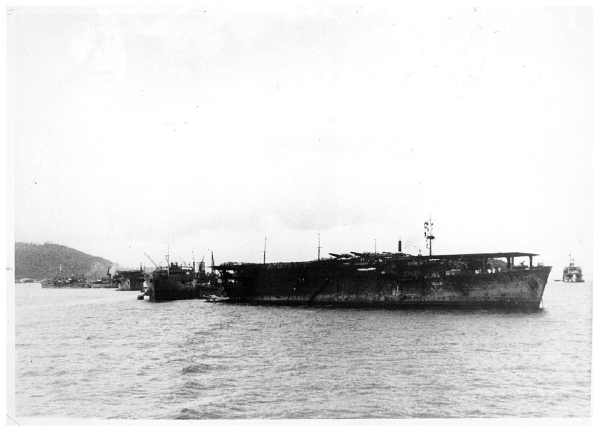| Chuyo |
Chuyo

| Operator | Imperial Navy |
| Classification | Escort Aircraft-carrier (converted from Nitta Maru) |
| Standard displacement | 17,830 tons |
| Speed | 21 knots |
| Departure point | Truk Island. |
| Departure date | 30 November 1943 |
| Destination | Yokosuka, Japan |
| No. of POWs | US 21 |
| Location of disaster | East of Hachijo Island |
| Date of disaster | 4 December 1943 |
| POW casualties | 20 |
| POW survivors | 1 |
| Photo | Courtesy of Kojinsha |
Being escorted by four destroyers, light aircraft-carrier Zuiho, Chuyo, her sister ship Unyo, and heavy cruiser Maya, which had been damaged at Rabaul and made makeshift repairs at Truk Island, departed there on 30 November 1943, bound for the Japanese homeland. At this time, Chuyo was carrying 21 POWs, Unyo 20 POWs aboard respectively. They were the ex-USS Sculpin's crewmembers, who had been sunk and rescued by destroyer Yamagumo on 19 November of the same year. On their way to Japan, they encountered an off-season typhoon, in which the USS Sailfish contacted Chuyo by Ultra Note), and attached her three times; at midnight, early in the morning, and after sunrise, and sank her.
Motor mechanist mate George Rocek, who became the only survivor of the 21 POWs stated that he was confined in a small cell with a small window along with other POWs.
Somehow or other, he managed to got out of the cell, stumbling his way up to the flight deck. After Chuyo went down, he floated on a raft with some Japanese before destroyer Urakaze came to rescue them. Rosek grabbed a line hanging over the side, and was pulled up to the deck. After they arrived at Japan, Rocek was tied up and blindfolded, and taken to Ofuna Naval POW Camp near Yokosuka, where he met his 20 shipmates who had been transported on Unyo. Of the approx. 3,000 crewmembers of Chuyo and passengers, the Executive officer, Deck handling officer, and some 170 persons survived in the mishap.
Note: Short for "Ultra Secret." The decoded messages from the coded messages regarding movement of the Japanese major vessels obtained from the output of the Imperial Navy's JN-25 codes.